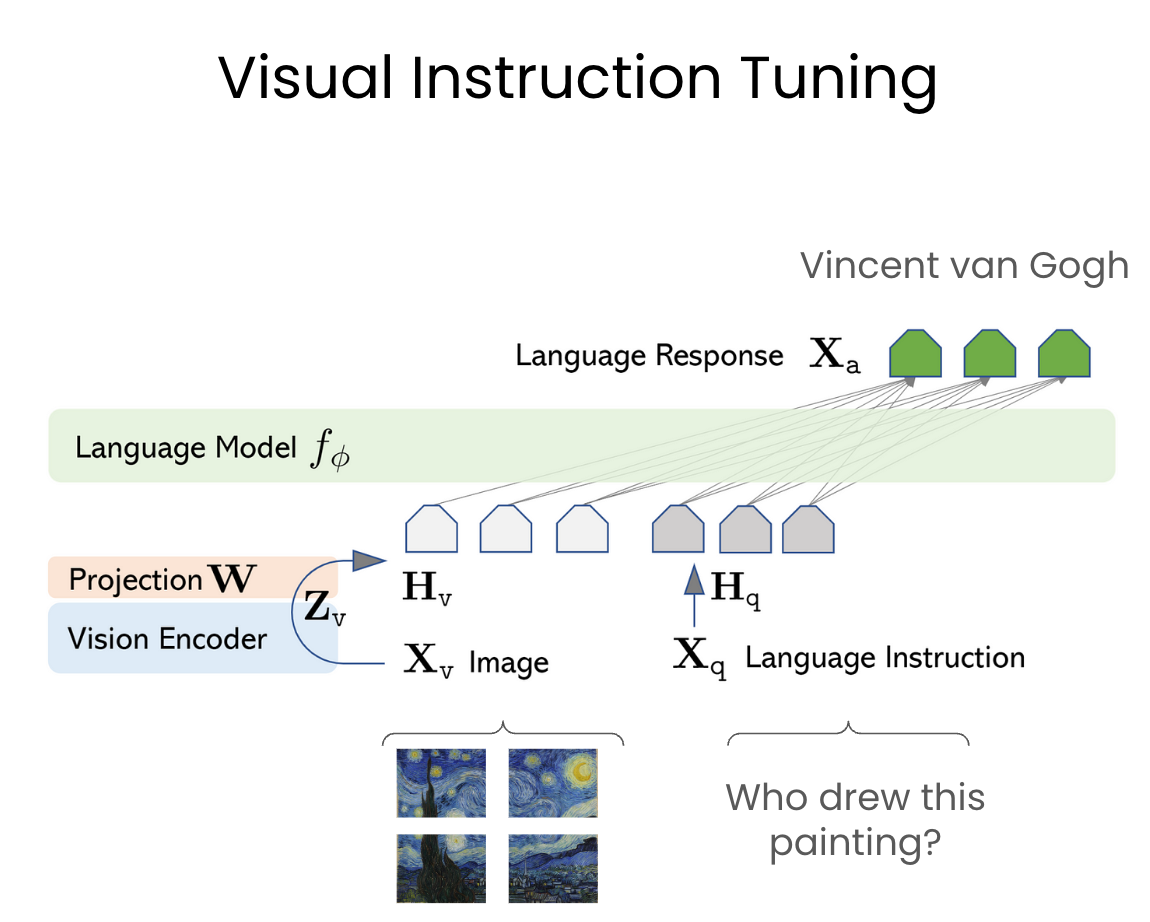
How do you teach a Large Language Model to see? Here's a breakdown!
This paper proposes a technique called Visual Instruction Tuning that is now used by many of the language vision models we see in the field such as LLaVA, GPT4-Vision and Gemini etc.
In Short:
The paper introduces a method to generate multimodal language-image instruction-following data using a language-only GPT-4 model. This data is then used to train LLaVA, a model that combines a vision encoder and a large language model (LLM) for general-purpose visual and language understanding.
How it Works:
VIT works by using GPT-4 to generate instructions for corresponding images and captions. This dataset is used to train LLaVA to learn to follow instructions and understand images. A vision encoder (CLIP ViT 40) is combined with an LLM (Vicuna) to process text and images and generate text.
Architecture:
LLaVA consists of two main components:
Vision Encoder (VE): A pre-trained vision encoder (e.g. CLIP) that takes an image as input and generates a visual embedding.
Large Language Model (LLM): A pre-trained LLM (Vicuna) that takes a text prompt as input and generates a language embedding.
The VE and LLM are combined through a series of layers and mechanisms to enable multimodal understanding and generation:
Benefits:
The combination of the VE and LLM enables LLaVA to understand and generate text and images in a unified framework, leverage the strengths of both visual and language models, generalize to unseen images and text prompts.
Results:
LLaVA achieves a 85.1% relative score compared to GPT-4 on a synthetic multimodal instruction-following dataset
Details in the Paper:
The VIT generation process, including prompt engineering and filtering
The LLaVA architecture, including the vision encoder and LLM components
Experimental results, including comparisons to GPT-4 and other baselines
Ablation studies and analysis of the effectiveness of different components and training strategies
Ready to start building?
Check out the Quickstart tutorial, or build amazing apps with a free trial of Weaviate Cloud (WCD).
Don't want to miss another blog post?
Sign up for our bi-weekly newsletter to stay updated!
By submitting, I agree to the Terms of Service and Privacy Policy.
